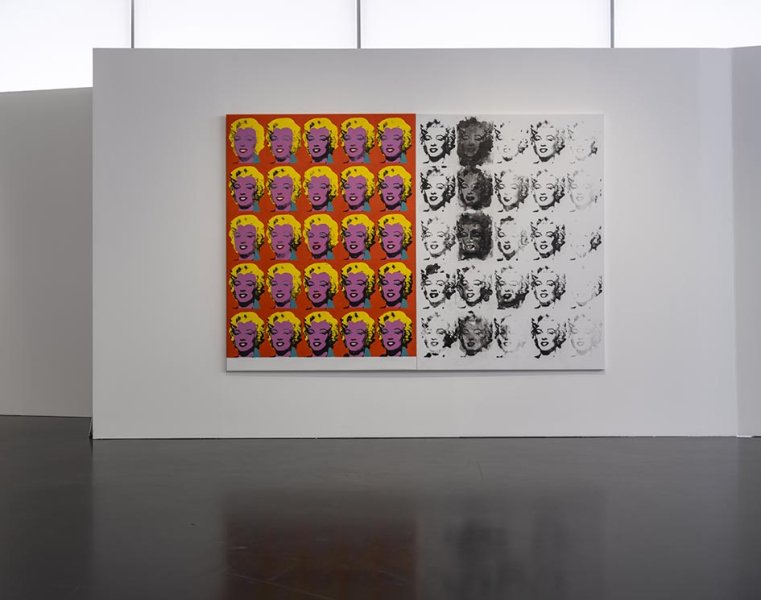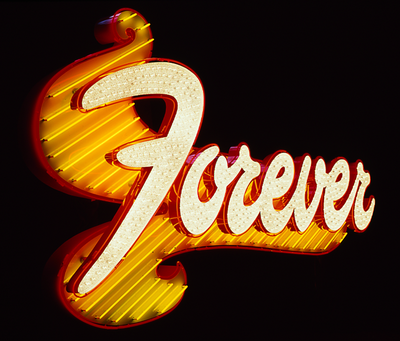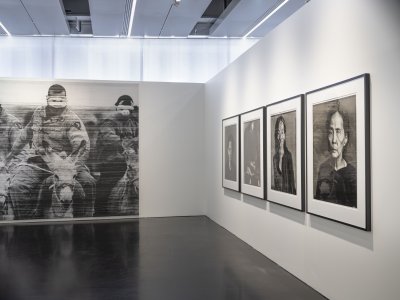Warhol Diptych
Synthetic polymer, silkscreen inks on canvas
213 x 322 cm (83 7/8 x 126 3/4 in.)
In 1964, Sturtevant wanted to use a work by Andy Warhol. “Andy knew my work,” she states. “One day, I just said to him, ‘I want your Marilyn or your Flowers.' In 1973, she did just that with Marilyn Diptych, a set of fifty portraits of Marilyn Monroe screen-printed by Warhol in 1962. The original screens used by Warhol ended up in Sturtevant's workshop and Marilyn Diptych became Warhol Diptych.
The ambiguity of the copy is complete as even the imperfections in Warhol's original reappear in the remake. Marilyn's grey face, spattered with the black stains caused by the ink passing over the screen, fades for the second time. For Warhol, for whom reproduction already resided in the work, Sturtevant's artistic project provided the opportunity to cast reproduction in an even more central role. When questioned about his technique, Warhol was therefore happily able to reply: “I don't know. Ask Elaine.” (Sturtevant quoted by Bill Arning, “Sturtevant,” Journal of Contemporary Art II, no. 2, autumn-winter 1989, p. 44).
By choosing to reproduce the works of contemporary artists she admires, at the very moment they appear, Sturtevant makes copying an act of support, of validation, of recognition.
This work is presented for the first time by the Pinault Collection in the exhibition "Au-delà de la couleur" at the Couvent des Jacobins in Rennes in 2021.











